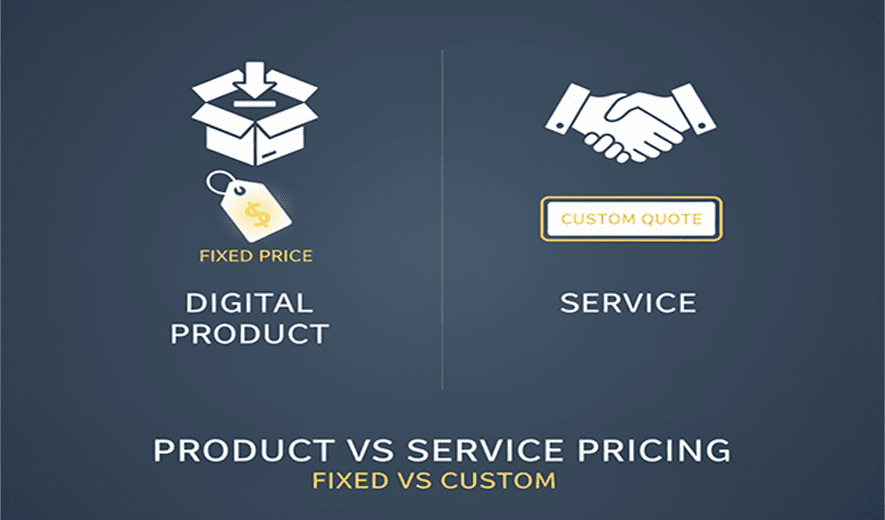
How to Price Digital Products vs Services
While digital products and services can both be intangible, their pricing strategies differ significantly, primarily due to cost structure, scalability, and perceived value. The pricing for a digital product is often based on the value it provides, while services are typically priced based on the time, labor, and expertise involved.
Pricing digital products
With a digital product, the cost of production (e.g., creating an e-book or software) is high, but the cost of reproduction is minimal, allowing for high-profit margins through different models.
- Value-Based Pricing: This popular strategy sets the price based on what customers believe the product is worth and the outcome it provides, rather than the production cost. For instance, a course that saves a freelancer many hours could be priced much higher than its development cost.
- Tiered Pricing: You can offer multiple versions of your product at different price points, with each tier adding more features or value. This captures different market segments, from a basic to a premium offering.
- Subscription/Membership: For a recurring revenue stream, you can offer ongoing access to content or a community for a monthly or annual fee.
- Freemium: Offer a basic version of your product for free, with premium features or an ad-free experience available for a fee.
- High-End vs. Low-Cost Positioning: Your pricing can signal your product's quality. A higher price can create a perception of high value, while a low price can aim for high sales volume.
- Test and Adjust: Because pricing can be so value-dependent, it is crucial to test different price points and adjust based on sales data, customer feedback, and income goals.
Pricing services
Pricing a service is more complex because it lacks a tangible, replicable unit. Factors like labor, time, market rates, and your brand's reputation are essential to consider.
- Hourly Rate: This simple and common method involves charging a fixed rate for every hour of work. It is often used for projects with unpredictable scope.
- Project-Based Fee: For a clearly defined project, you can charge a single flat rate. This offers clients predictability but requires a solid understanding of project scope and potential hidden costs.
- Value-Based Pricing: Like with digital products, this strategy prices your service based on the specific value or outcome delivered to the client. This allows for higher margins, as the price is not limited by the hours worked.
- Package-Based Pricing: This involves offering predefined bundles of services for a fixed price, like basic, standard, or premium packages. It provides clarity for clients and can streamline your workflow.
- Retainers: Charge a recurring fee for a set amount of your services each month, which provides predictable income for your business.
- Competitive Pricing: You can benchmark your prices against competitors but should adjust based on your unique value proposition. Charging too little can signal low quality.
- Consider Time and Experience: Your price should reflect the value of your time and your expertise. As you gain more experience, your value increases and your prices can too.
